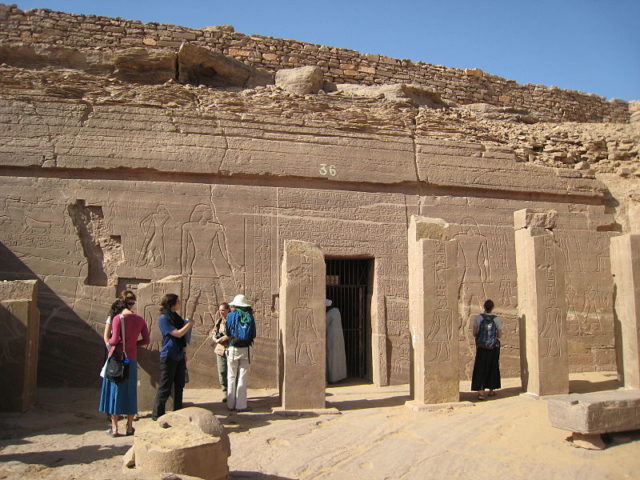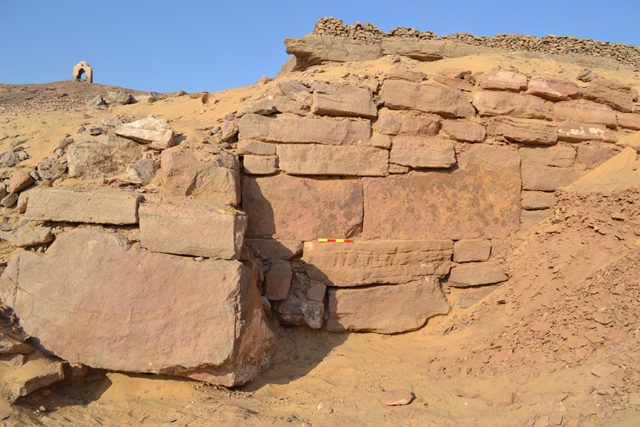At Qubbet el-Hawa in West Aswan Egypt, an exciting new tomb discovery has possibly been made in an ancient graveyard dating back to 2278-2184 BCE. This discovery was made during excavations by archaeologists from the University of Birmingham, The Egyptian Exploration Society, and Qubbet-el Hawa Research Project Group.

A new wall has been unearthed that appears to be part of the supports of the tombs of Harkhuf and Heqaib, the governors of Elephantine 1,200 years ago. Elephantine Island is one of the islands in the Nile opposite the city of Aswan, Upper Egypt. It has many archaeological structures – monuments, temples, and buildings. It is thought to have gotten its name from the ivory that was once traded there. The students and archaeologists who are working the site are investigating the tombs, buildings, and artifacts from the Old Kingdom and First Intermediate Period in 2278-2184 BC. The old shards of pottery embedded within the ancient mortar have been a significant find in helping date the site. Eman Khalifa, who is a director from the Qubbet el-Hawa Research Project Group, has stated that the crushed pieces of pottery are a style common to the reign of King Pepi II of the Sixth Dynasty. King Pepi II was a Pharaoh who ruled from the age of six, and it is thought that his reign lasted a staggering 94 years.

Photo Credit
The main reason archaeologists are so excited is because of a find made earlier this year of a new tomb with an extremely well-preserved mummy inside, still wrapped in the original linen and encased inside two wooden coffins. The inner coffin is so well preserved that it is thought that testing will easily show what wood was used. It is a female mummy and is believed to be the remains of a key figure of the Middle Kingdom. Called “Lady Sattjeni,” she was not only the mother of Heqaib III and Amaeny-Senb, two of the highest authorities in Elephantine, but when all her male relatives died she herself became the sole holder of dynastic rights in the government, Mail Online reported.
Read another story from us: Queen Nefertiti may lie buried behind Tut’s tomb
With luck and steady work, the archaeologists will continue to dig deeper into the site where these discoveries are being made. It is thanks to the arid nature of the area that the monuments and artifacts that are slowly being uncovered are in such good condition. Hopefully, they will continue to amaze and surprise us.
